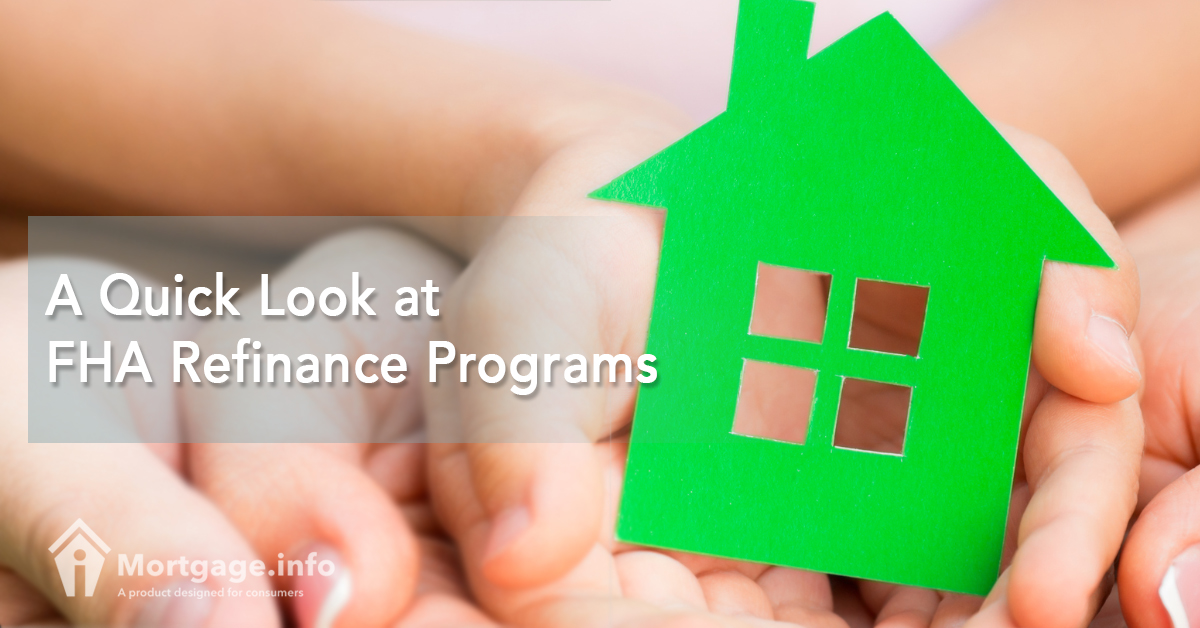The Federal Housing Administration offers a number of refinance options for homeowners. These FHA refinance programs can be loosely classified as cash-out refinance, no cash-out refinance, and short refinance (for non-FHA loan owners). If you want to refinance your current FHA mortgage, check out these FHA refinance programs.
Cash-Out Refinance Program
You do an FHA cash-out refinance when you borrow against your equity, with or without mortgage. Under this transaction, you take out a new loan for more than what you currently owed, using the proceeds to pay off the existing loan, pay down credit card balance, and more.
To qualify for a cash-out refinance, you must prove sufficient income as evidenced by paycheck stubs, W-2 Forms, and federal income tax returns.
You must also produce an appraisal on the property, which should have an 85% LTV. A cash-out refinance is for owner-occupied properties (primary residence) only.
Moreover, you can’t have a late payment of more than 30 days on your mortgage within the last 12 months. You must hold a six-month mortgage history with a payment history to be verified by your credit report.
No Cash-Out Refinance Programs
Under an FHA no cash-out refinance transaction, you replace your existing mortgage with a new mortgage to pay off the existing debt and related costs. These are the major no cash-out loan types under the FHA.
Rate and Term Refinance
The proceeds of the new loan are used to pay off the existing FHA mortgage debt, other liens, and all costs associated with the rate/term refinance. This refinance does not require an appraisal.
Simple Refinance
The new loan proceeds will be for the payoff of the existing mortgage debt and the costs associated with the closing of the new loan. This refinance requires a brand new appraisal.
Streamline Refinance
This program entails the use of the loan proceeds to pay down the current FHA mortgage loan, with limited borrower and property documentation.
Two types of streamline refinance exist:
Credit qualifying requires a manual underwriting of the borrower’s credit and capacity.
Non-credit qualifying does not require a manual underwriting of the borrower’s credit and capacity.
FHA Streamline does not generally require an appraisal. It also does not require a credit report on non-credit qualifying streamline refinances. Likewise, income and employment need not be certified for streamline refinance.
203(k) Refinance
Under FHA 203(k) program, borrowers can refinance and rehabilitate their old homes. An FHA 203(k) loan can be used to pay off the existing mortgage and place the remaining funds in an escrow to be released when the rehabilitation of the property is completed.
The repair project should be at least $5,000 but no more than the applicable FHA mortgage limit. Rehabilitation activities can range from minor repairs to virtual reconstruction. As the FHA noted, its general guidelines apply to 203(k) loans, subject to additional fees that may be charged by the lender.
Negative Equity Position (Short Refi)
This program targets non FHA-insured mortgage holders who are current on their mortgages but in negative equity positions (underwater).
If you qualify for a short refinance, your principal balance could be reduced by at least 10%. FHA Short Refinance is set to expire on Dec. 30.
FHA-to-FHA Refinance
With the exception of the Short Refi Program, you can avail of any of those refinance programs for an FHA-to-FHA refinance. If you wish to refinance, you must at least hold title to the property before the transaction.
Then if you do an FHA-to-FHA refinance within three years, you can avail of a rebate credit to reduce the amount of your upfront mortgage insurance premium (UPMIP).
In FHA refinance transactions where appraisals are required, the adjusted value of the property will be used.
For example, if you acquired the home within 12 months of the refinance transaction, the adjusted value is whichever is lesser of the amount you paid on the home, plus improvements made to the home post-purchase, or the property’s current value.

